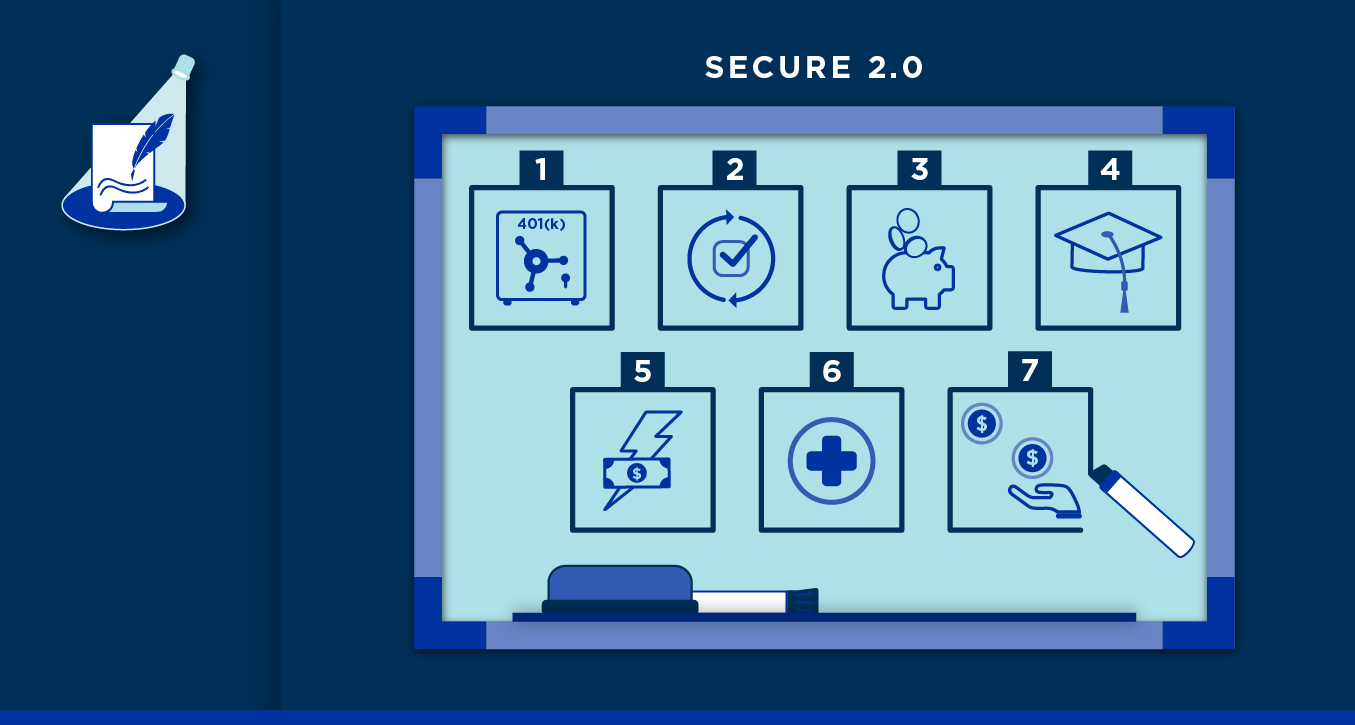
90 new provisions in the Consolidated Appropriations Act of 2023 signed into federal law at the end of December are designed to encourage employers to offer more robust retirement options and employees to take full advantage of available retirement benefits.
Popularly known as SECURE 2.0, these provisions have the potential to help millions of employees on the path to financial security, thereby boosting their productivity and wellness and your bottom lines and social impact.
Here are seven key provisions to know for businesses and organizations who are interested in harnessing the full potential of a financially healthy workforce.
1) Automatic 401k Enrollment is Mandatory Starting in 2025.
If you’re an employer who started a retirement plan after December 29, 2022 then you will be required to automatically enroll your employees in your plan at a rate of three percent to 10 percent of eligible wages.
There are exceptions, of course, for new companies in business for fewer than three years and for employers with 10 or fewer workers.
2) Automatic 401k Contributions Must Increase to 10 Percent and Up to 15 Percent.
For retirement plans started after December 29, 2022, contributions must automatically increase by one percent each plan year until they’re at least 10 percent and no more than 15 percent of eligible wages.
There are exceptions for governmental and church plans, businesses with 10 or fewer employees, and employers in business less than three years.
3) Employer Contributions Now Can Get the Roth Treatment.
In the before times, pre-SECURE 2.0, employer contributions could only be pre-tax. Now, effective immediately, plan sponsors can offer employer matching contributions, which will be 100 percent vested, to Roth accounts.
But there’s a big catch for your employees so make sure they’re aware of it if you decide to go the Roth contribution route:
Your Roth contribution will be included in your employees’ gross income for tax purposes which could be a problem for some employees come tax time, especially if your employer contribution is substantial.
4) Student Loan Payments Can Qualify for Matching Employer Retirement Contributions.
A big win for millions of employees who are struggling to save for retirement while paying off student loans: Employers can treat student loan payments as retirement plan contributions and make matching contributions in employees’ retirement accounts beginning in 2024.
5) Retirement Plans Can Offer Linked Emergency Savings Accounts.
Addressing a common employee fear that they could need money they saved for retirement to cover near-term needs, this provision enables employers to automatically enroll employees in emergency savings plans linked to their 401(k)s, beginning in 2024, at up to three percent of eligible wages (up to $2,500). Employees will be able to withdraw funds without the 10 percent early withdrawal penalty and they will not have to pay taxes on the withdrawn funds.
6) Retirement Withdrawals are Allowed for Certain Emergency Expenses.
Typically there’s a 10 percent tax on early distributions or withdrawals from retirement accounts like a 401(k). Thanks to SECURE 2.0, beginning in 2024, one withdrawal per year of up to $1,000 for certain emergency expenses will be allowed without penalty.
7) Saver’s Match Replaces Saver’s Tax Credit.
Starting in 2027, the tax credit that now exists for low- and moderate-income employees who contribute to retirement accounts will become a limited government-funded matching contribution, or a saver’s match in human terms. Eligible employees can receive up to $2,000 annually, deposited into their retirement savings account.
The matching contribution will be 50 percent of the employee’s contribution and phased out with rising income ($41,000 to $71,000 for married, filing jointly households, $20,500 to $35,500 for single taxpayers).

Schedule a time to speak with a TrustPlus financial health and productivity expert about how TrustPlus will help you capture the benefits of a financially healthy workforce.






